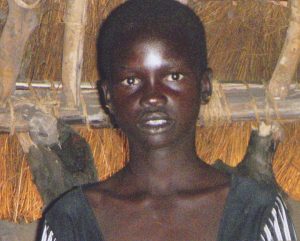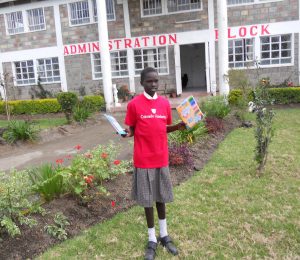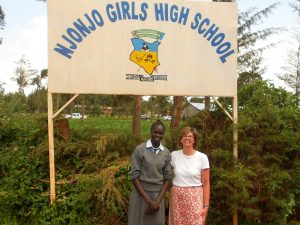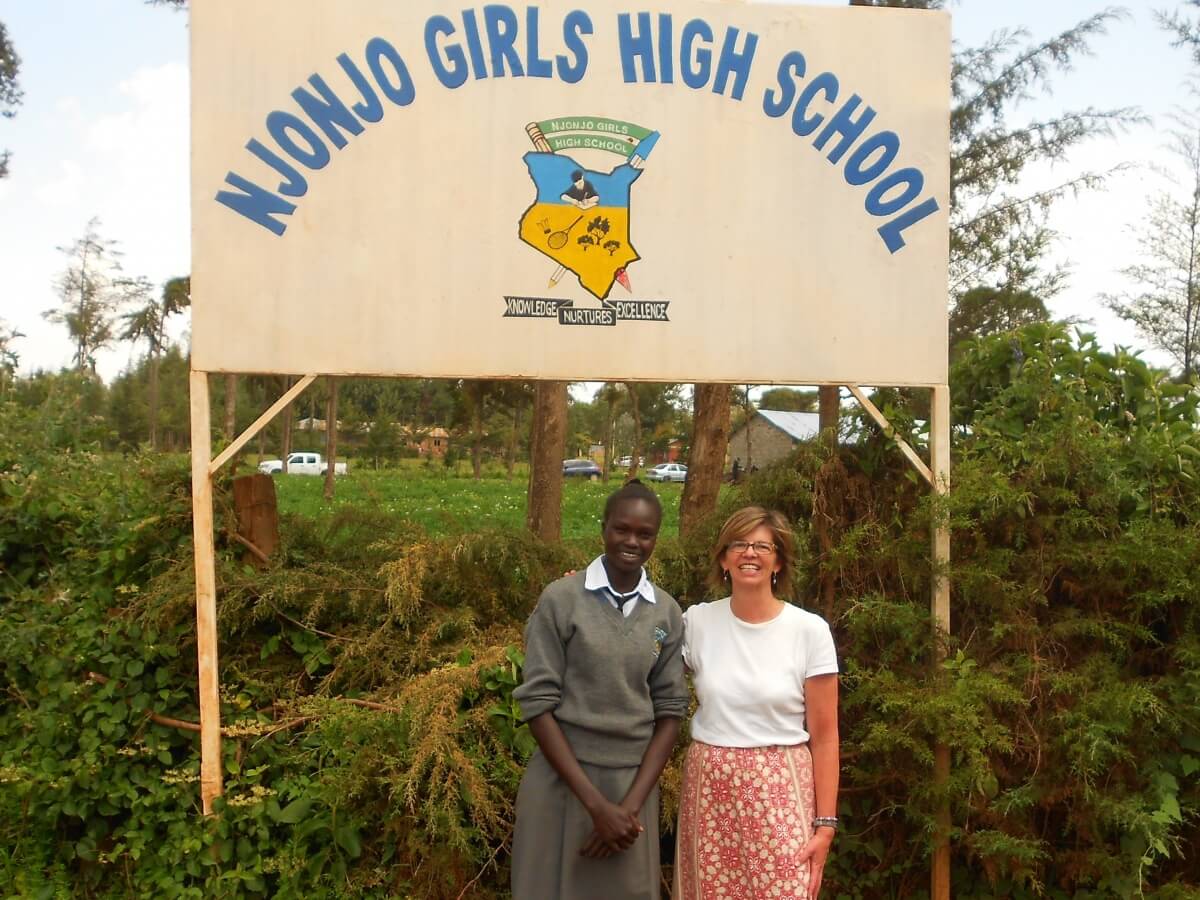I met Aguil Lual Deng for the first time in July 2017, though I had known her for nearly a decade. The 16-year-old Sudanese orphan stood a few inches taller than me outside of the cafeteria at Njonjo Girls High School in Laikipia, Kenya. Laughing, she described her initial surprise at my appearance — despite being told that her sponsoring teacher was female, she had been certain all these year that I was male given my surname: Counterman. Until that day, Aguil had existed for me only through letters and academic school records. I had existed for Aguil – along with the CA Middle School students who sponsor her education – through pictures and small tokens of our affection: a reminder that we were thinking of her.
As a Middle School science teacher, I first came to know of Aguil in 2008 through the Seeds of South Sudan program, a nonprofit that seeks to fund the education of orphaned South Sudanese refugees. The founder of the nonprofit, and one of the original Lost Boys of Sudan, Arok Garang, spoke to my students about his experience escaping the Sudanese Civil War. Like the 20,000 other Lost Boys – a moniker given to those orphaned due to the fighting — the war took both of Arok’s parents. To escape the war, or worse, of being forced into becoming a child soldier, Arok walked more than 1,000 miles to the Kakuma Refugee Camp in Kenya with the other Lost Boys. Along the way, they suffered tremendous obstacles. Namely, the scarcity of water. When there was none to be found, the boys drank their own urine.

Orphaned due to ongoing genocide in South Sudan, Aguil had also fled to the Kakuma Refugee Camp. Wedged between two dry riverbeds in the northwest corner of Kenya, Kakuma’s semi-arid desert was little reprieve. The environment presents many challenges to this day. Among them: dust storms, high temperatures, and outbreaks of cholera and malaria.
With Arok as my travel companion and translator, I set out in July for my trip to Kenya. We had planned to use the two weeks to retrace Aguil’s journey. However, because the situation in South Sudan prevented us from visiting her village of Palaiu, we began that journey at Kakuma.
With some difficulty, we received permission to visit Kakuma to meet camp director, David Mgatia. He informed us that of the 171,000 people living within Kakuma’s 1-5 regions, 71% of them are South Sudanese. We were permitted to visit Kakuma 1, the region where the more than 3,000 original Lost Boys, including Arok, left in 2001 for their new lives in the U.S. Today, more than 800 South Sudanese arrive weekly — mostly women and children.

Kakuma was uncharacteristically muggy the day we visited. The camp had received its first rain in two years. With Arok translating, I interviewed students who were waiting in line for their daily meal — one bowl of beans provided by the World Food Program. I learned the students were desperate for the same things Aguil and Arok had wanted all those years ago: peace, freedom, and an education. Like the children in line, Aguil lived a similar lifestyle for several years, fighting to eke out a meaningful existence under harsh conditions.
And then one day, her life changed.
In 2008, Aguil was plucked from Kakuma and delivered via bus 350 miles south to Nakuru. There, she joined a small group of orphans in the Seeds of South Sudan program. As the founder of Seeds of South Sudan, Arok was the silent lever puller who put that move into place. As were the students at CA.
Colorado Academy began sponsoring Aguil that year with an annual commitment of $1,200. The funds support Aguil’s education, as well as the purchase of school supplies, clothing, medical care, transportation, a home, and nourishing meals for months when school is not in session. Soon after arriving in Kakuru, Aguil began her primary education at Root’s Academy, the top boarding school in the area, and the next stop on our journey.

Arok and I drove the 12 hours to Roots from Kakuma, where we were greeted by the Headmaster. He told us that Aguil had graduated from the school at the top of her class of 1,000 students. The story had made the local paper, and was pinned to his office wall. Aguil’s achievements continued from there: Of the more than 900,000 students who took the primary school final exam, she was one of 5,000 to receive a top score.
Aguil’s hard work and persistence determined our next destination: the Njonjo Girls High School, the top girls school in Kenya — 121 miles northeast of Nakuru. The Headmaster allowed me only 15 minutes to meet with Aguil. But in our short time, Aguil expressed her thanks to everyone who has supported her at CA and assured me that she will continue to do her very best in school. Likewise, she encouraged CA students to do their best in their own academic careers.

Before leaving, Aguil told me she wants to become a medical doctor. Tenacious about her goal to pursue medicine, she calculates that it is the best way she can contribute to the future of South Sudan. Someday, Aguil also wants to visit Colorado Academy. She wants to personally thank everyone who has supported her throughout the years.
Standing outside the cafeteria at the Njonjo Girls High School with Arok and Aguil, it was easy to acknowledge the humanity that can rise from despair, and the love that can exist between strangers with nearly opposite life experiences. One other takeaway was almost palpable: the power of education to transform the sometimes intersecting paths of our individual journeys.
